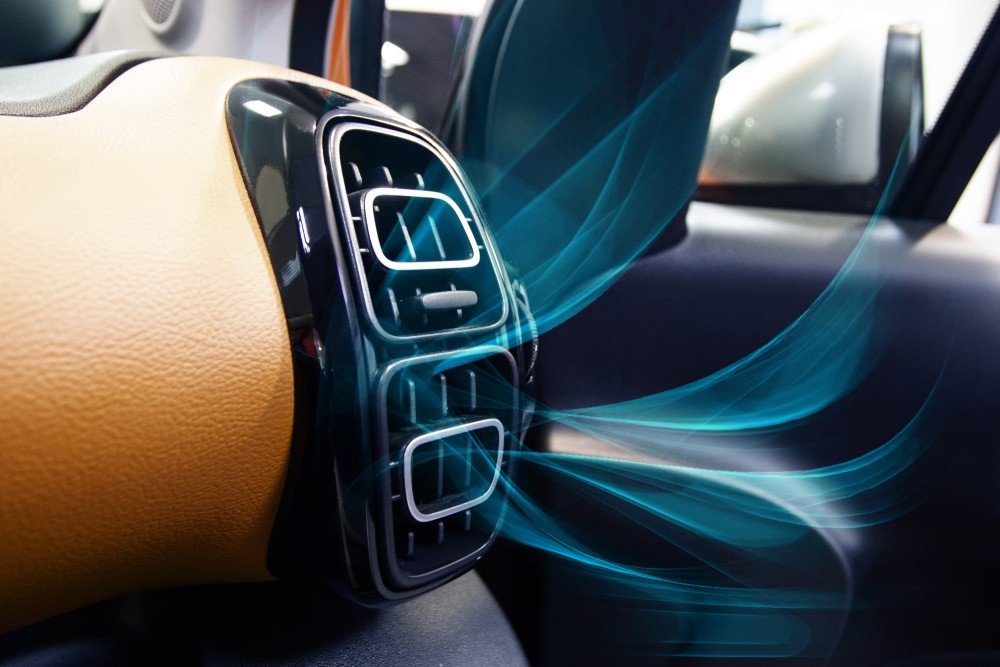The delightful arrival of warm summer weather presents the perfect opportunity to enhance the comfort of your car. When confronted with those scorching days, whether embarking on a long journey or simply navigating around town, it is paramount to have a dependable air conditioning system that ensures your utmost comfort.
This comprehensive guide by Dubai Auto glass will guide you about the correct working of car AC, provide a thorough understanding of how they operate, and offer valuable insights on what to seek in a top-quality system. So fasten your seatbelt and prepare to embark on an exhilarating adventure as you conquer the elements with the most revitalizing travel companion imaginable!
How Does a Car AC Work?
- Multiple components must work together to operate automotive air conditioning systems. The compressor circulates and presses refrigerant gas and is the system’s hub. Gas becomes high-temperature, high-pressure vapor in the compressor.
- In front of your car’s radiator is the condenser. Condensers cool and condense the compressor’s hot refrigerant vapor. Passing air through small metal fins attached to tiny refrigerant-carrying tubes does this.
- After chilling and condensing, the liquid refrigerant is transferred to an expansion valve orifice tube. These components control the evaporator’s liquid intake.
- Your car’s evaporator is near the heating core. This component’s low-pressure liquid refrigerant-filled evaporator coils are heated by outside air. As they return to gas form, these filaments absorb your vehicle’s heat energy.
- A ventilation fan distributes this freshly cold air throughout the car’s interior using ductwork.
- In summer, automotive air conditioning systems cool, entering fresh air and removing heat from the interior.

The Varieties of Automobile Air Conditioning Systems
- Several car air conditioning systems are available. Before choosing, you must understand the pros and cons of each variety.
- Belt-driven compressors are common. The engine belt drives the compressor, which circulates refrigerant throughout the system. It works well but costs more to fix.
- Don’t forget that Electric compressors work too. As the name implies, this device uses a battery-powered motor instead of a belt-driven compressor. Hybrid and electric cars utilize it to manage energy and reduce gasoline usage.
- Some cars have dual-zone and multi-zone systems. These systems provide car passengers with temperature control. They’re comfortable but need maintenance.
- Some premium cars include seat ventilation systems with blowers to directly cool passengers. This cools summer days.
- The best automotive air conditioning system depends on your needs. Consider cost, efficiency, upkeep, and features before choosing.
Pros and Cons of Automobile Air Conditioning
- Automotive air conditioning quickly cools the cabin. Long trips and traffic congestion benefit from this. On hot days, the system transfers heat from the inside to the outside, making driving comfortable.
- Car air conditioning systems also improve air quality. Filters trap pollen, dust, and other impurities before they enter. Traveling without stimuli is crucial for allergy and respiratory sufferers.
- However, there are a few drawbacks to think about. A major disadvantage is the need for fuel, which means that if ac is on in the car, the car needs more fuel consumption than without ac, and mileage will become low. Air conditioning uses engine energy, increasing fuel consumption. This may dissuade ecologists and oil cost cutters.
- Extended usage of an automobile’s air conditioning system may strain belts and pulleys. Regular maintenance optimizes efficiency and prevents costly issues.
What To Consider When Purchasing An Automobile Air Conditioning System?
- To choose the finest car air conditioning system, consider numerous aspects. Important considerations:
- Air conditioner cooling capacity directly affects car interior cooling. Choose a car air conditioner with enough cooling power to blast cold air inside without caring about the 55-degree Celsius outside.
- Energy-efficient air conditioning saves gas, reduces pollutants, and protects the environment. Evaluate energy-efficient systems.
- Traveling with a noisy air conditioner isn’t fun. To travel peacefully, use a quiet system.
- Long-lasting air conditioning systems save money on maintenance and replacements.
- Choose an air conditioner with easy-to-replace filters and parts.
- Make sure the air conditioning system you choose works with your car.
How Do You Implement An Automobile’s Air Conditioning System?
Car air conditioning may make summer travel much more comfortable. You can do it on your own if you have the necessary equipment and the necessary level of skill.
- First, Gather all the car ac installation kits. Air conditioning unit, refrigerant, hoses, connections, and mounting brackets. Choose a system that fits your car.
- Next, attach your car’s air conditioner. Repairs and upkeep should be easy. Screw or tighten the mounting brackets to the best spot.
- The next step is to get everything wired up. Install as directed by the manufacturer. Secure hoses and connectors before continuing.
- After connecting everything, add refrigerant. Overcharging harms air conditioners and the environment. If in doubt, consult an expert.
- Activate the new air conditioning system and ensure all vents blow cold air. Congratulations if your car’s interior is quiet and everything works! You installed car air conditioning.
However, installing an AC system requires technical knowledge, so don’t hesitate to seek professional assistance.
How Do You Troubleshoot An Automobile’s Air Conditioning System?
It’s frustrating when your car’s air conditioning doesn’t work in summer. Before heading to the repair shop and spending money, why don’t you try a few troubleshooting techniques underwritten to avoid this fuss and mess?
- Test the A/C compressor first. Start and turn on the air conditioning. Electrical problems or low refrigerant levels may cause the compressor not to vibrate.
- Next, check the condenser for leaves, dirt, or damage. Clear blockages and ventilate condenser fins.
- If the compressor and condenser work but no cold air comes out of the vents, the refrigerant may be escaping. Refrigerants need specialist equipment. Thus only an expert can fix this.
- If none of these troubleshooting methods work or you need clarification about how to continue, call a skilled auto air conditioning specialist.
Ensure your automobile’s air conditioning is working properly by doing the recommended maintenance and service at the recommended intervals. By adhering to these troubleshooting tips and taking preventative measures to maintain your system, you can experience fresh comfort while driving, even on the hottest days!





